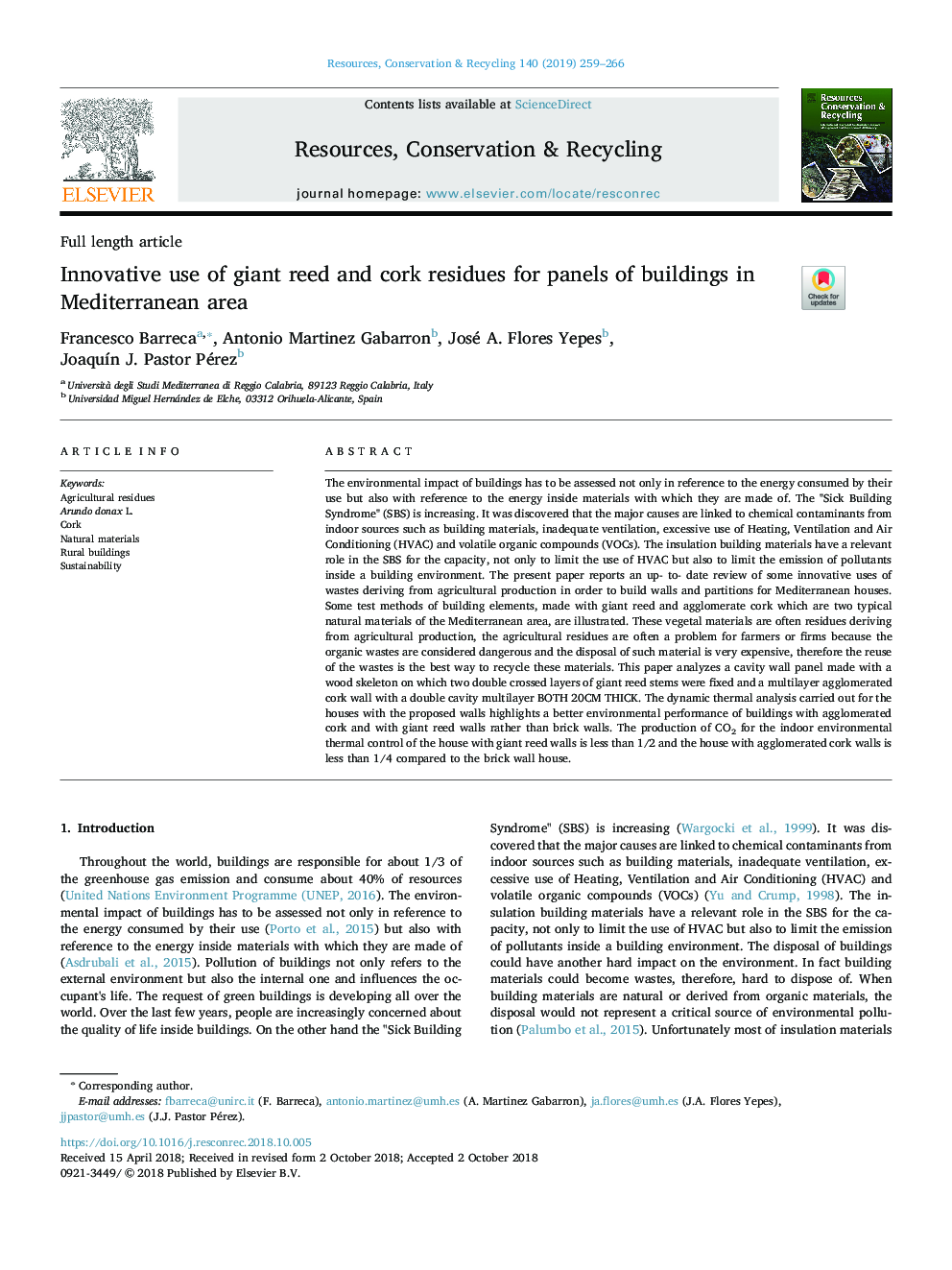| Article ID | Journal | Published Year | Pages | File Type |
|---|---|---|---|---|
| 11027511 | Resources, Conservation and Recycling | 2019 | 8 Pages |
Abstract
The environmental impact of buildings has to be assessed not only in reference to the energy consumed by their use but also with reference to the energy inside materials with which they are made of. The "Sick Building Syndrome" (SBS) is increasing. It was discovered that the major causes are linked to chemical contaminants from indoor sources such as building materials, inadequate ventilation, excessive use of Heating, Ventilation and Air Conditioning (HVAC) and volatile organic compounds (VOCs). The insulation building materials have a relevant role in the SBS for the capacity, not only to limit the use of HVAC but also to limit the emission of pollutants inside a building environment. The present paper reports an up- to- date review of some innovative uses of wastes deriving from agricultural production in order to build walls and partitions for Mediterranean houses. Some test methods of building elements, made with giant reed and agglomerate cork which are two typical natural materials of the Mediterranean area, are illustrated. These vegetal materials are often residues deriving from agricultural production, the agricultural residues are often a problem for farmers or firms because the organic wastes are considered dangerous and the disposal of such material is very expensive, therefore the reuse of the wastes is the best way to recycle these materials. This paper analyzes a cavity wall panel made with a wood skeleton on which two double crossed layers of giant reed stems were fixed and a multilayer agglomerated cork wall with a double cavity multilayer BOTH 20CM THICK. The dynamic thermal analysis carried out for the houses with the proposed walls highlights a better environmental performance of buildings with agglomerated cork and with giant reed walls rather than brick walls. The production of CO2 for the indoor environmental thermal control of the house with giant reed walls is less than 1/2 and the house with agglomerated cork walls is less than 1/4 compared to the brick wall house.
Related Topics
Physical Sciences and Engineering
Energy
Renewable Energy, Sustainability and the Environment
Authors
Francesco Barreca, Antonio Martinez Gabarron, José A. Flores Yepes, JoaquÃn J. Pastor Pérez,
